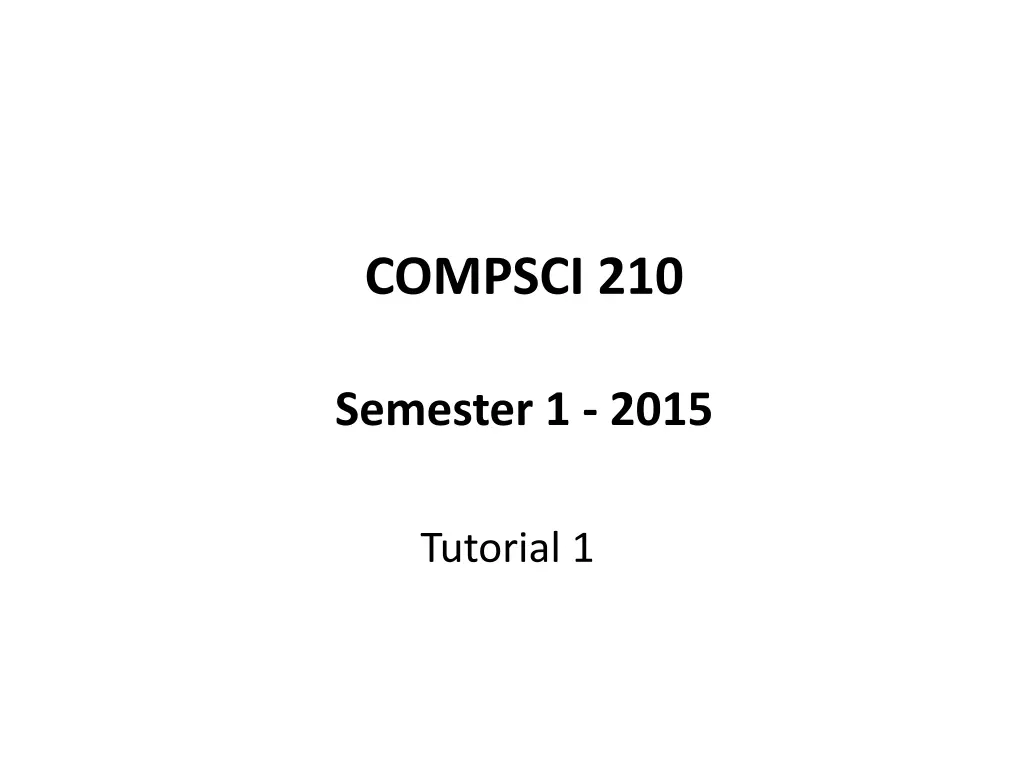
Binary and Decimal Number Conversions: Tutorials and Solutions
Learn how to convert binary numbers to decimal and vice versa, including 2's complement representation. Understand the process step by step with detailed solutions for various examples. Explore decimal fractions to binary conversion and IEEE floating-point representations for different decimal numbers.
Download Presentation

Please find below an Image/Link to download the presentation.
The content on the website is provided AS IS for your information and personal use only. It may not be sold, licensed, or shared on other websites without obtaining consent from the author. If you encounter any issues during the download, it is possible that the publisher has removed the file from their server.
You are allowed to download the files provided on this website for personal or commercial use, subject to the condition that they are used lawfully. All files are the property of their respective owners.
The content on the website is provided AS IS for your information and personal use only. It may not be sold, licensed, or shared on other websites without obtaining consent from the author.
E N D
Presentation Transcript
COMPSCI 210 Semester 1 - 2015 Tutorial 1
2.10 Convert the following 2's complement binary numbers to decimal numbers. a) 1010 b) 01011010 c) 11111110 d) 0011100111010011
2.10. c --- Solution 11111110 sign bit is 1, so this number is negative. Calculate the 2's complement. 0000001 (flipping the digits above) + 1 0000010 = -2 (Affix a minus sign in front)
2.10. d --- Solution 0011100111010011 sign bit is 0, so this number is positive. =0*(2^14)+1*(2^13)+1*(2^12)+1*(2^11)+0*(2^10)+0*(2^9)+1*(2^8)+ 1*(2^7)+1*(2^6)+0*(2^5)+1*(2^4)+0*(2^3)+0*(2^2)+1*(2^1)+1*(2^0) =1*(2^13)+1*(2^12)+1*(2^11)+1*(2^8)+1*(2^7)+1*(2^6)+1*(2^4)+ 1*(2^1)+1*(2^0) = 8192 + 4096 + 2048 + 256+ 128 + 64 + 16 + 2 + 1 =14803
2.11 convert these decimal numbers to 8 bit 2 s complement binary numbers. a) 102 b) 64 c) 33 d) -125 e) 127
2.11.a --- Solution 102 128 64 32 16 8 4 2 1 0 1 1 0 0 1 1 0 102 51 0 25 1 12 1 6 0 3 0 1 1 0 1
2.11.d --- Solution -125 128 64 32 16 8 4 2 1 0 1 1 1 1 1 0 1 Two s complement: 10000010 (flipping the digits above) + 1 (adding 1 ) 10000011
Decimal fractions to Binary (0.3125)10= (?)2 0.3125 * 2 = 0.625 0.625 * 2 = 1.25 0.25 * 2 = 0.5 0.5 * 2 = 1.0 (0.3125)10= (0.0101)2 (0.0101)2 = (0. 0*2-1+1*2-2+0*2-3+1*2-4)10 = (0. 0 + 0.25 + 0 + 0.0625)10 = (0.3125)10
2.39 Write IEEE floating point representation of the following decimal numbers? a) 3.75 b) -55.359375 c) 3.1415927 d) 64,000
2.39.b --- Solution -(55.359375)10= -(110111.010111)2 Normalizing the number -1.10111010111 . 25 1 10000100 10111010111000000000000 The sign bit is 1, reflecting the fact that the number is a negative number The exponent: 5 = 132 127 =>10000100
2.39.d --- Solution (64,000)10= (1111101000000000)2 Normalizing the number 1111101000000000 = 1.111101000000000 . 2 15 0 10001110 11110100000000000000000 The sign bit is 0, reflecting the fact that the number is a positive number The exponent is 15 = 142 127
ASCII Codes ASCII stands for American Standard Code For Information Interchange. Each key on the keyboard is identified by its unique ASCII code When you type a key on the keyboard, the corresponding eight-bit code is stored and made available to the computer Most keys are associated with more than one code, for example, h and H have two different codes
